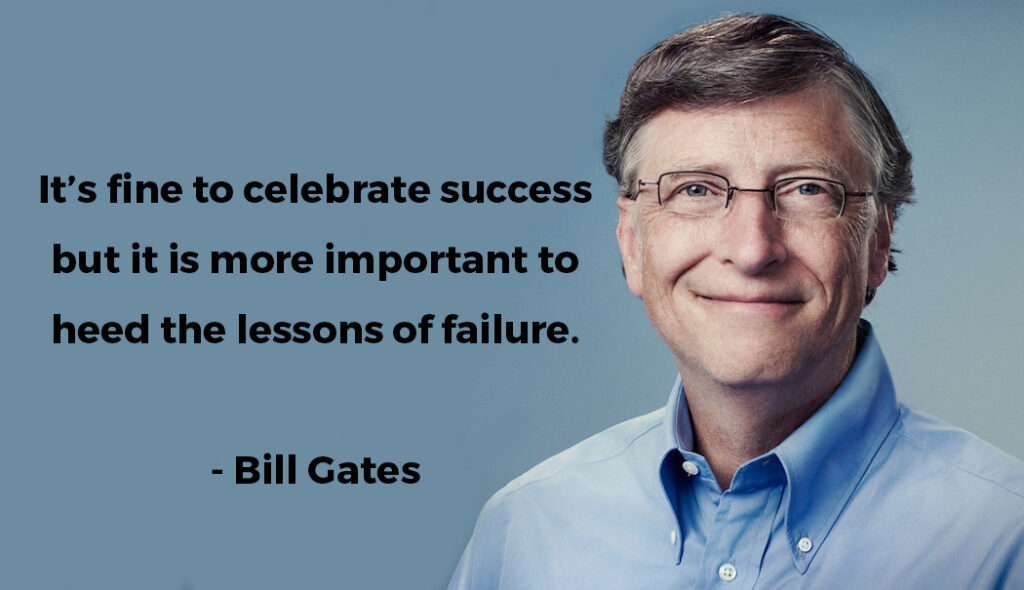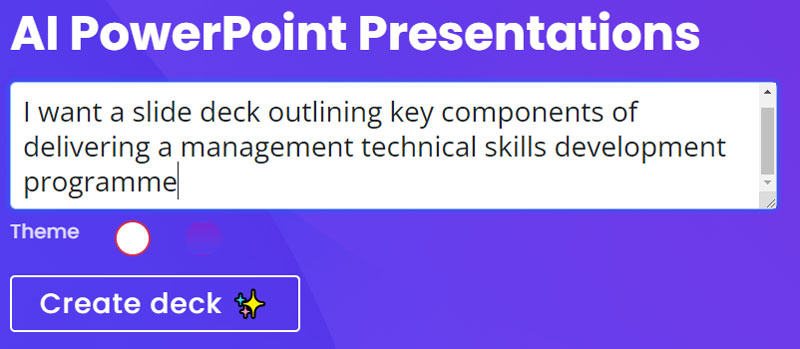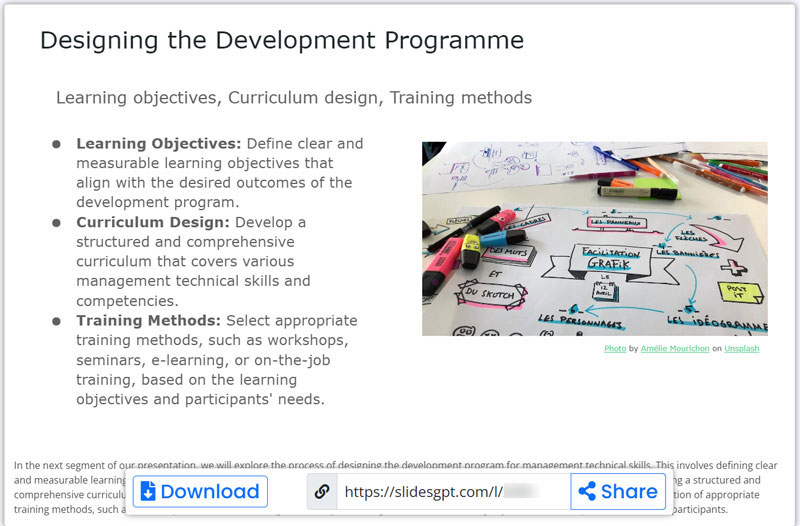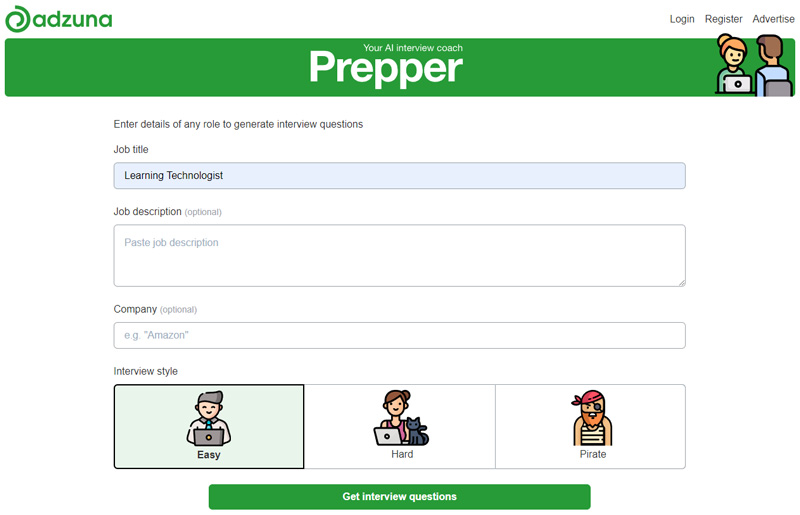Content on this page
- Competency-based Questions
- Behavioural Questions
- Using The STAR Technique
- Advice for Specific Interviews (Learning Technologist, Careers Advisor, Learning & Development, Exams Officer)
- Using AI to Help With Your Interview Questions
- Using AI to Help With Your Presentations
- Further Information and Links
Competency-based and Behavioural Questions
If your application form doesn’t require you to answer any competency-based questions, then you will most probably be asked these questions in interview. You may also be asked some behavioural questions in interview. In my most recent interview, I was told at the start of the interview that I would be asked a mixture of the two.
The difference between the two can be confusing because both competency-based questions and behavioural questions usually start with something like “describe a time when…” and both require you to talk about past experiences to demonstrate that you meet the criteria for the job.
Make sure you read and understand the job advert. Have a look at the job description/person specification and make a note of the main competencies that the employer is looking for. Think of examples of when and how you’ve demonstrated those competencies. Your examples could come from teaching, previous employment or any relevant work experience you’ve undertaken.
The STAR technique is the best method of answering both competency-based and behavioural questions. Answering in this way tells the interviewer why you did something, what you had to achieve, how you achieved it and the outcome. By thinking about the tasks that you perform in your job as a teacher, you will find that you have more transferable skills than you thought.
Competency-based questions
Competency-based questions are asking about skills, talents and abilities to perform the job. They are always specific to the role and could involve skills such as financial, technical, marketing, leadership, critical thinking or analytical skills.
“Describe a time when you supported a colleague who was struggling with their work.”
An example of a competency-based question
This question would relate to teamwork and would require you to describe how you show an interest in others, how you encourage others, how you find information to help others, etc. As a teacher, you will most definitely have at least one example to illustrate your answer.
Click on this competency-based questions link to see examples of competency-based questions that you may be asked that cover the following key competencies:
- Communication
- Decision making
- Leadership
- Results orientation
- Teamwork
- Influence & Persuasion
- Motivation
- Responsibility
- Professional development
- Technical skills
- Managing a quality service
- Delivering at pace
- Trustworthiness
- Commercial awareness
Check out the links at the bottom of the page for further advice on how to answer questions.
BACK TO TOPBehavioural questions
Behavioural questions are based on the idea that past behaviour can predict future action and they are asked to try to find out more about your personality. Interviewers want to find out about your communication and your decision-making style, how you influence people, the types of teams that you prefer to work in, and your attitude to risk. Behavioural questions are asked to find out if you are a good fit for the culture of the organisation. A common behavioural question will ask about conflict.
“Tell me about a time when you had to work with someone difficult.”
“Describe a time you had to deal with an angry customer. How did you handle the situation?”
Examples of behavioural questions to do with conflict
This type of question is trying to find out your conflict management ability and general interpersonal skills. Most jobs require you to get on with different types of people. Because of this, there may be disagreements at some point. A recent question I was asked was, “How do you feel when someone has a different opinion to yours”. Again, this is trying to find out how you handle conflict and these questions are common because everybody wants to hire a “team player” who can handle conflict without involving the management and/or human resources.
Using The STAR Technique
“Tell me about a time when you had to work with someone difficult.”
S/T (Situation/Task)
“I was Head of Department, and one of my responsibilities was making sure that everyone in my department met the deadlines for completing pupil reports so that they went out to parents on time.
Each academic year we had to write reports for Years 7 to 11. On this occasion, we had to complete Year 10 reports.
In my routine checks, I found that one of the teachers had still not completed their reports by the deadline at the end of the day. Before I became Head of Department, they had a reputation for missing deadlines and their bad temper, and I’d always felt like I was treading on eggshells when around them. When I approached them about it, they blew up at me.”
The Situation and Task for a conflict scenario
This scenario provides good context — there was a tight deadline. The teacher not only missed the deadline, but blew their top when called on it. This is a real conflict that could have led to disaster if handled poorly.
A (Approach)
“I was taken aback by their response, but I remained calm. I explained that the Curriculum manager had emailed the deadline to all staff and that this was so that reports could be completed on time and go out to parents.
They relaxed a little when they saw that I wasn’t attacking them. They told me about all the things going on in their life and how overwhelmed they were. I asked if there was any way that I could help them come up with a solution.
We decided we would speak to the Curriculum Manager together. The Curriculum Manager agreed to give an extension for the next day. I had a free period and arranged to cover one of the teacher’s lessons to take some pressure off so that they could complete any remaining reports during that lesson time.”
The Approach for a conflict scenario
This shows that they stayed calm under pressure, tackled the issue head-on, and was able to persuade others (the teacher and the Curriculum Manager) to their point of view.
R (Results)
“As a result, the teacher met the deadline the next day. They apologised for losing their temper and thanked me for my help.
The department met all deadlines and all Year 10 reports went out to parents on time.
At the end of the year, the Curriculum Manager thanked me for my work in meeting all deadlines and bought me a mug as a present to show their gratitude.”
The Result for a conflict scenario
This is a happy ending. The answer describes the resolution of the conflict, the positive effect on the relationship with the teacher, and the outcome.
Tips
- The best examples are those that produce measurable results, such as increasing productivity by x% or increasing profits by £x. However, this may not always be possible with teaching examples. Choose an example that shows you taking an active approach to resolving an important conflict.
- Be specific. Don’t give a wishy-washy answer like, “I deal with conflicts all the time and have learned to stay calm and that communication is key.” It’s boring and it doesn’t answer the question.
- Don’t choose a minor conflict (“They used my mug and didn’t wash it!”) or a conflict that was resolved by someone else. You need to show off your interpersonal skills and problem-solving ability.
- Avoid anything that could make you look bad. For example, don’t share a time when you caused conflict because of something you did.
- Show why this conflict was important and that you handled it capably.
- Keep the story concise. Don’t go off on tangents. Keep it focused.
- Don’t try to memorise a script. Stick to bullet points.
Behavioural Questions to do with Failure

I was once asked a question to do with failure in an interview. I didn’t answer it very well, which is why I put this together. Example questions are: “Give an example of a time when you failed.”, “Have you ever made a mistake and, if so, what did you learn from it?” and “Give an example of a goal you didn’t meet and how you handled it.”
These type of questions ask you to talk about a negative experience when you are trying to present yourself in the best possible light. However, the interviewers know you are not perfect; everyone fails at something at some point. This questioning is trying to tell them if you are someone who learns from failure. They are wanting to know if you are self-aware enough to acknowledge failure.
The Big Interview recommends that every job candidate should prepare an interview story about failure and that you shouldn’t avoid the question and say that you can’t think of any failures. Not answering the question will make the interviewers interpret your non-answer in one of four ways, none of which are flattering:
- You think you are perfect and thus have no self-awareness or ability to grow.
- You’re hiding a history of tragic failures that you don’t want us to know about.
- You don’t hold yourself to a very high standard, so you never fail.
- You always play it safe and never take any risks or make any bold moves.
For advice on how to answer behavioural questions about failure, read The Big Interview article, Answering Behavioural Questions: Your Biggest Failure.
Other Difficult Behavioural Questions
BACK TO TOP“Describe a stressful situation at work and how you handled it.”
“Tell me about how you worked effectively under pressure.”
“Describe a decision you made that was unpopular and how you handled implementing it.”
“Can you describe a time when you handled a difficult situation with a supervisor/client/another department?”
“What do you do if you disagree with your boss?”
Examples of difficult behavioural questions
Advice for Specific Interviews
Learning Technologist
I am now a Learning Technologist at a university and have gained my Certified Membership of the Association for Learning Technology (CMALT), which is a portfolio-based professional accreditation scheme. The Association for Learning Technology (ALT) has a series of blog posts covering different areas of the application and interview process:
- Learning Technologist: You’re Hired! Part 1 – Prepare to apply
Learning Technologist: You’re Hired! Part 2 – Your application
Learning Technologist: You’re Hired! Part 3 – Interview preparation
Learning Technologist: You’re Hired! Part 5 – Post interview and advice
Careers Advisor
I applied for a job as a Careers Advisor and was offered an interview. I was told that I would have to talk about IAG. I had tried to Google IAG, but couldn’t find the answer and so I had to contact them and ask what IAG was… that was embarrassing!
In an interview for the role of Career’s Advisor, try and focus your answers on interacting with adults and older students rather than with younger kids. For example a question where you have supported someone to make a difficult choice maybe focus on your interactions with colleagues rather than children. You can then go in to say that you do this all the time in the classroom but remember they need to see you can use your skills with people older than 11. Of course, make sure you use the STAR technique every time in all your responses.
If asked to give a presentation, I would base it around IAG. For example, what are the differences between ‘Information’, ‘Advice’ and ‘Guidance’ and explain how you will help students with each aspect. You could Illustrate this with example scenarios. If asked how you would support students then you could build up a good bank of useful websites, much like I do here with useful links on this website. You could encourage students to create a LinkedIn profile and try to build good relationships with local employers. You could find out when careers fairs are happening in the local area. You could get to know the local labour market, make connections with local businesses, and maybe even arrange careers fairs yourself.
Learning & Development
Someone commented in the Thinking of Leaving Teaching Group about being in Learning & Development and that they were holding interviews where the following questions would be asked:
- What is your experience with delivering training outside of your area of expertise?
- How would you measure the impact of learning? (Apparently this is a big one in L&D and they advised to focus on the learning journey and ongoing support and opportunities beyond the training room or session itself).
- How do you address different learning needs and styles?
- How would you respond to and ensure credibility when delivering training to participants who have 20+ years experience in that field and are considered experts? (They advised to bring in L&D knowledge here and how subject matter expertise doesn’t automatically equate to being able to share knowledge effectively so can affect managing others, succession planning etc, how there’s always more to be learnt, how to use others’ experience in a training session and utilise a room full of knowledge.)
- What is your experience with e-learning content creation? (They advised researching software such as Articulate Storyline 360 and Rise 360. Personally, I would add Adobe Captivate to the list too.)
- What L&D goals do you have for yourself?
- They also said that it is very possible that someone on an interview panel would ask how you would cope with working with adults and not children 🙄. Here, you should talk about any training sessions you have led in INSETs, for example.
Learning & Development Presentation
A member of the Thinking of Leaving Teaching Group was offered an interview for a Learning and Development role in which they were asked to present on how they’d make sure their sessions were inclusive and accessible for all. To help this person, I asked ChatGPT to answer the question, ” how can Learning and Development sessions be made inclusive and accessible for all?” ChatGPT returned the following answer:
“There are several methods that can be used to make learning and development sessions inclusive and accessible for all participants. Here are some suggestions:
- Provide materials in advance: Make sure that all participants have access to the materials in advance, so that they can review them at their own pace and in a format that is accessible to them.
- Use inclusive language: Use language that is inclusive of all participants, and avoid using terms that may be exclusive or offensive.
- Consider different learning styles: Different people learn in different ways. Some people are visual learners, while others are auditory or kinesthetic learners. Incorporate different methods of instruction to accommodate different learning styles.
- Provide captions or transcripts for videos: If you are using videos as part of the learning session, provide captions or transcripts so that people who are deaf or hard of hearing can also participate.
- Use accessible technology: Use technology that is accessible to all participants. For example, use screen readers or text-to-speech software for people who are blind or visually impaired.
- Offer breaks: Offer regular breaks during the learning session to give participants time to rest and refocus.
- Check for accessibility needs: Ask participants in advance if they have any accessibility needs, such as the need for a sign language interpreter, and make sure these needs are accommodated.
- Encourage participation: Encourage participation from all participants, and make sure that everyone has a chance to share their thoughts and ideas.
Overall, creating an inclusive and accessible learning environment requires an understanding of the diversity of participants and a commitment to ensuring that everyone can fully participate in the learning experience.”
Someone who worked in Learning & Development added this response:
“I’d focus on ensuring any content developed/delivered is accessible off line, and how you’d do that. It could be through pre-recorded downloadable webinars, creating e-learning content in “bitesize” modules that don’t have to be completed in one sitting, utilising virtual training platforms (I’d even mention moving away from MS Teams and Zoom in favour of using built-rooms on your organisation’s LMS to ensure easy access, recording and recall).
Depending on the scale and scope of the charity, you could look into translation of materials. If you aren’t MFL, you could focus on sourcing suitable consultants to deliver in local language if its relevant to the organisation.
Recording and reporting is a major focus in L&D at the moment, and measuring the impact of trainings, so I’d try and incorporate that into how you’d make things inclusive and accessible.
Of course, all the usual things still apply; think EHCPs but transferable to the workplace!
Bottom line – adults are busy, they want to have L&D opportunities but are short on time, and sacrificing any time to train can be a sore point! Make things engaging, quick and easy to digest, accessible in their own time, and where possible, available in local language.
One other thing, which will likely be ironic as your presentation will likely be on PPT, but try to avoid death by PowerPoint in training sessions. Participants love things that are interactive! And if they can watch a video in 3 minutes to save them reading a 20 minute corporate style article, they much prefer that!“
The group member got the job!

Exams Officer
Watch this Exams Officer Interview Questions and Answers video:
Using AI to Help You With Your Interview Questions
In Job Search – Your CV & Cover Letter, I talked about how I used AI in early 2023 to help me write a cover letter for a job application. A few months later, in June 2023, Adzuna launched an AI interview coach ‘Prepper‘. You simply enter the job title and get interview questions. If you wish, you can add the job description and the name of the company you have applied to.
There are three levels of questions; easy, hard and pirate! I did this for my job title (Learning Technologist) and got the following results:
Easy
Question 1: “Can you explain what a Learning Technologist does?”
Question 2: “What are the key skills and qualifications needed for this role?”
Question 3: “Can you provide an example of how you have used technology to enhance learning?”
Question 4: “How do you stay updated with the latest trends and developments in learning technology?”
Question 5: “Tell us about a time when you had to troubleshoot a technical issue in a learning environment.”
Hard
Question 1: “Can you explain the difference between synchronous and asynchronous learning?”
Question 2: “How would you incorporate gamification into an online learning course?”
Question 3: “What strategies would you use to ensure accessibility for all learners in an online learning environment?”
Question 4: “Describe your experience with learning management systems and instructional design software.”
Question 5: “Tell me about a time when you had to troubleshoot a technical issue during a live online learning session. How did you handle it?”
I was impressed! I have been asked all those questions in Learning Technologist interviews.
BACK TO TOPUsing AI to Help You With Your Presentations
If you are asked to create a presentation for an interview then you can use AI to help you find relevant content and give you ideas. There is also an online service called SlidesGPT which not only finds the content, it also creates the slides.
First of all, you enter what you want it to create. I entered an example which has been asked in the Thinking of Leaving Teaching Group which was, “Outline the key components of delivering a management technical skills development programme”.

In less than two minutes, it had created the PowerPoint presentation with slides such as this, including notes:

You can’t save the PowerPoint for free; to download as a PowerPoint file you need to pay $2.50. However, it can help by giving not only content ideas but also organisation of your presentation.
BACK TO TOPFurther information:
Most Commonly Asked Interview Questions for a Career Advisor
The most common competency-based interview questions – Total Jobs
Behavioural interview questions – Reed A useful link as it gives “right” and “wrong” answers.
Common Behavioural Interview Questions – Big Interview – Click on the links for question examples and advice on how to answer them.
50 Most Common Interview Questions – GlassDoor – Most of these are general interview questions.
Job Interview Q & A – Big Interview – How to Answer “What Is Your Greatest Weakness?” in an Interview, Questions to Ask an Interviewer after an Interview, and more.
If you’re thinking of leaving teaching then the Thinking of Leaving Teaching Group might be a good place to get some ideas. It is a safe place for people to ask for help and advice, discuss topics and share opinions about jobs you can do if you leave teaching.
BACK TO TOP

